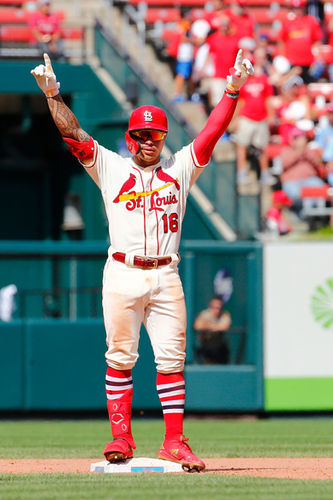
Justin Verlander turned in one of the signature performances of his career in October 2017, when he threw 99 pitches under immense pressure to lead the Astros past the Yankees and force Game 7 in the American League Championship Series. Among the admirers in attendance was Jack Morris, an old warhorse-turned-broadcaster who paid him the ultimate tribute.
“Our generation is all smiling when we see him pitch,’’ Morris said. “He gives us all a smile.’’
Based on modern trends of roster-building and pitching strategy, you would think the strong-willed, throwback-y starter was being phased into oblivion. But Verlander and some noteworthy peers are showing it’s still possible for starting pitchers to dominate the conversation when the games matter most.
Tired of talking about home runs, launch angle, exit velocity and bullpenning? Maybe it’s time to take note of the supreme starting pitching on display this month.
Baseball’s Division Series field features four starters who are either Hall of Fame locks or well on the way. Verlander, 36, threw his third career no-hitter in September and later became the 18th member of MLB’s 3,000-strikeout fraternity. Teammate Zack Greinke joined the 200-win club and went 8-1 with a 3.02 ERA after joining the Astros by trade from Arizona. In Washington, Max Scherzer extended his streak of 200-plus strikeout seasons to eight -- second only to Tom Seaver’s run of nine. And Clayton Kershaw led the National League in quality start percentage while ranking among the league leaders in WHIP and ERA en route to his eighth All-Star team.
They’re not the only veterans showing that age is merely a state of mind. Charlie Morton, aka “Uncle Charlie,’’ had his best career season at age 35 and threw five innings without allowing an earned run in Tampa Bay’s wild card win over Oakland. In St. Louis, Adam Wainwright leaned heavily on his cutter and curve and logged 14 wins at age 38.
Further down the age spectrum, the results were equally impressive. Gerrit Cole picked off enough strikeouts, wins and other milestones to elicit comparisons to Roger Clemens, Nolan Ryan, Randy Johnson, Sandy Koufax and Pedro Martinez in the Astros’ game notes. Stephen Strasburg and Patrick Corbin pitched exceptionally well in Washington, Hyun-Jin Ryu won the NL ERA title with a 2.32 mark in Los Angeles, and James Paxton averaged 11.1 strikeouts per nine innings in his first season as a Yankee.
Finally, a nod to the kids: St. Louis’ Jack Flaherty, Atlanta’s Mike Soroka and Los Angeles’ Walker Buehler all showed they have the temperament, resourcefulness and stuff to be contributors at the top of rotations for years to come.
As the regular season showed, MLB teams continue to reduce the burden on starters and heap more work on bullpens. In 2014, a total of 34 MLB pitchers surpassed 200 innings. This year, 15 starters reached that threshold. In 2014, the 30 teams received an average of 487 innings from their bullpens. This year, that total spiked to 609. Given how severely relievers are taxed, it’s no surprise that the aggregate bullpen ERA rose from 3.58 to 4.43 in that span.
Relievers will no doubt be at the center of some pivotal moments in October. But that won’t stop the elite starters from aspiring to go deep every time out, or squeezing the ball hard enough to make the manager pry it from their hand come the sixth, seventh or eighth. That competitive will -- combined with talent and resourcefulness -- sets the great ones apart from the crowd.
Kershaw, a three-time Cy Young winner, has continued to thrive while deftly adjusting his pitch mix through the years. Greinke remains a force with a fastball that registers 90.0 mph, and Verlander is still at the top of his game thanks to physical gifts and a drive that never wanes. According to Baseball-reference.com, Verlander ranks 30th in history among starting pitchers with a 71.4 WAR. For sake of comparison, Old Hoss Radbourn is 29th at 73.2. While Old Hoss couldn’t be reached for comment, we suspect he would appreciate the company.

.png)



















